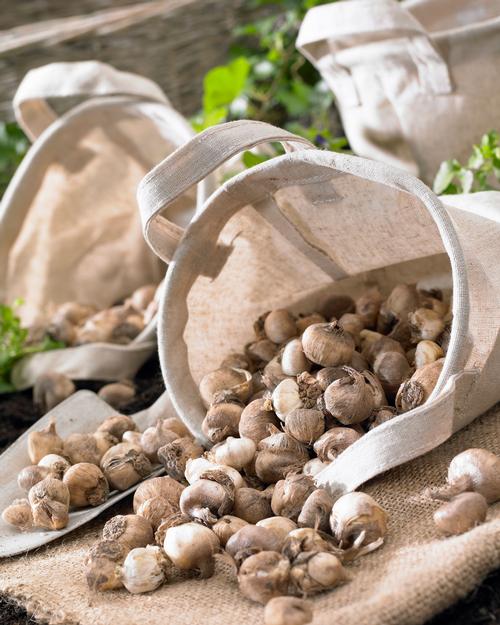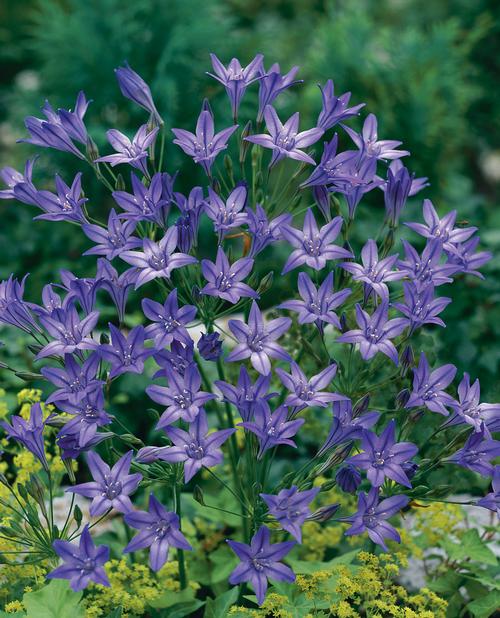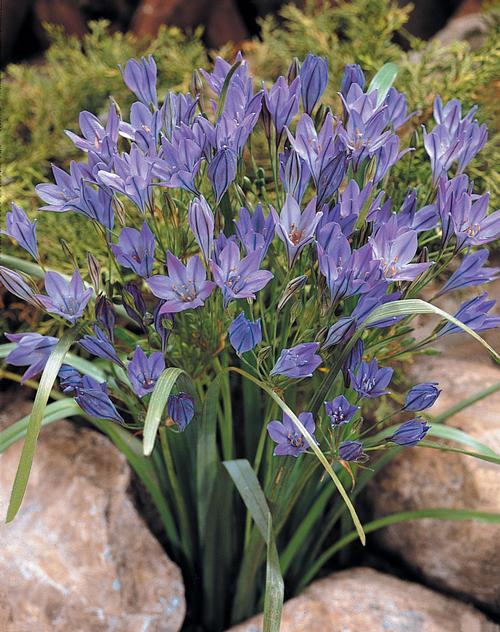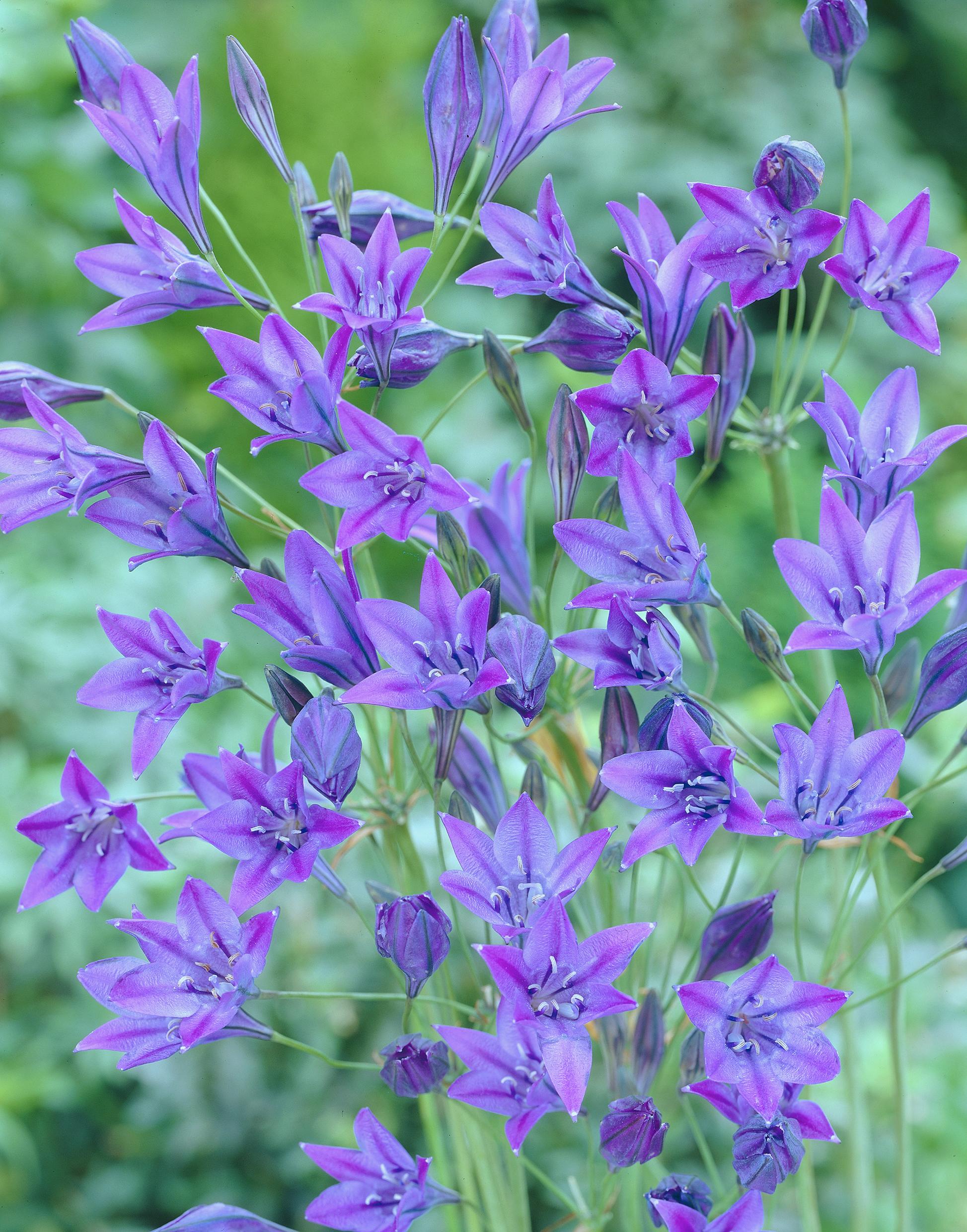ALL ABOUT BRODIAEA
Brodiaea 'Queen Fabiola' (Brodiaea laxa) is grown for its clusters of deep blue flowers, which appear in late spring and early summer. This plant is native to the west coasts of North and South America, where it grows wild in dry grasslands and arid, shrubby areas. Also recognized as Triteleia laxa ‘Queen Fabiola’. Commonly known as the triplet lily, fool’s onion, wild hyacinth or Ithuriel’s spear.

START WITH A BETTER BULB
Brodiaea grow from crocus-like bulbs called corms. As with most bulbs, investing in top quality corms will give you the best results. The corms should be solid and firm -- not mushy or dried out.
If areas where brodiaea is winter hardy (growing zones 8-9), the corms may multiply and naturalize. Brodiaea can also reproduce by seed.

PLAN FOR SUCCESS
Brodiaea are winter hardy in zones 8-9 (zone 7 if mulched during winter). In these areas, the corms may be planted in fall or spring.
In colder areas, brodiaea corms are planted in spring. The plants can be grown as annuals or the corms can be dug up in fall and wintered indoors. Longfield Gardens offers brodiaea corms that are grown in Holland and they are available only for spring planting.
When planting brodieae corms, choose a warm spot where the plants will get full sun or mostly sun. The soil should be gritty or sandy (rock gardens are ideal), and be moist in spring, but stay dry during summer and fall.

HOW TO PLANT BRODIAEA
Plant brodiaea corms in a garden or in containers with the root end down, 2-3” deep and 4-5” apart in clusters of 9-12 corms. In areas with wet summers, it's best to grow brodiaea in containers so they can be easily moved to a dry location during the summer when the bulbs are dormant.
WHAT TO EXPECT
Brodiaea's grass-like leaves appear in spring and then fade away when the flowers appear in late spring and early summer. You'll want to plan for this when thinking about where to place them in your garden. The overall height is about 15-20”.
Queen Fabiola's blue-violet flowers are borne in clusters, with individual flowers opening continuously for a month or more. This extends the bloom time and also makes brodiaea an excellent cut flower. Bees and butterflies love them, too.

HOW TO CARE FOR BRODIAEA AFTER THEY BLOOM
In warm climates (zones 8-9) brodiaea will survive the winter outdoors, so there's no need to worry about them.
In zones 4-7, the corms should be dug up in the fall, right after the first frost. Allow the plants to dry for a few weeks and then cut off the foliage. Store the bulbs in a cool, dark place at about 50°F.
If you grow brodiaea in pots, you can simply bring the pots indoors and store them at 40 to 45 degrees F. Keep the soil dry. In the spring, move the pots back outdoors and resume watering.
In areas where brodiaea is hardy, the corms may naturalize and need dividing every 3 to 5 years. Dig and divide them when they are dormant -- during early spring or late fall.
